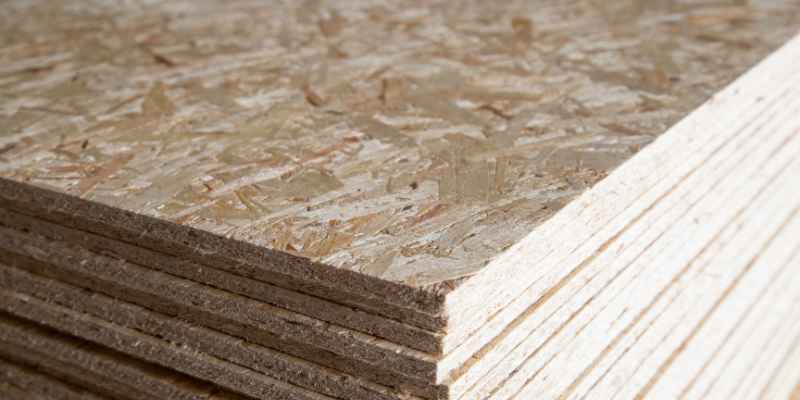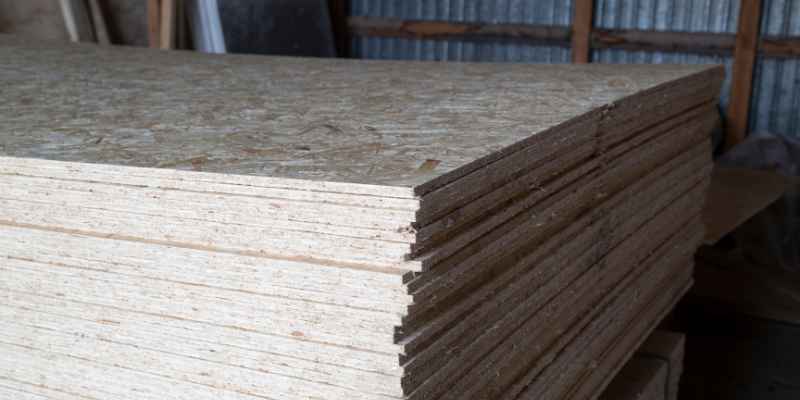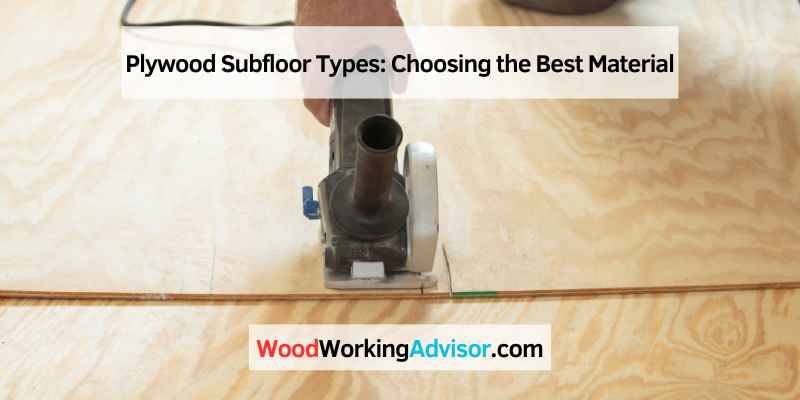Plywood is the best option for subfloors due to its water and mold resistance and superior strength when compared to OSB. Subflooring is a critical component of any flooring installation, as it provides a foundation for the finished product.
However, selecting the right subfloor material is essential to ensure long-term durability, stability, and quality. Plywood is the most common subfloor material due to its strength, durability, and ease of installation. It has superior resistance to water and mold when compared to other materials such as oriented strand board (OSB) or particle board.
The thickness of the plywood subfloor depends on factors such as the joist spacing and the finished floor covering. Using tongue and groove plywood is also recommended as it adds extra support and prevents squeaking and creaking. We’ll explore the different types of subfloor materials available for construction projects and their advantages and disadvantages.
Types Of Subfloor Materials
Plywood is a popular choice for subflooring due to its strength, durability, and ease of installation. It also has excellent water and mold resistance compared to other materials like OSB or particle board. Tongue and groove common flooring plywood is a recommended option for subflooring.
When it comes to subflooring, choosing the right material is crucial for ensuring the durability and safety of your flooring. There are several types of subfloor materials available, each with different characteristics and suitability for specific flooring applications. In this article, we’ll discuss some of the most common subfloor materials, including plywood, oriented strand board (OSB), particle board, concrete, concrete slab, and tile.
Plywood is a popular subfloor material that is made from layers of thin wood veneers that are glued together. It is widely used for its strength, durability, and water resistance. Plywood is available in various grades and thicknesses, making it adaptable to different subflooring applications. Tongue and groove plywood is an optimal subfloor option that helps force a more level floor and prevent squeaking, creaking, and grinding from people walking.
Oriented strand board (OSB) is another type of wood-based subflooring material that is a good alternative to plywood. OSB is made by compressing strands of wood and resin into layers, giving it a unique texture and appearance compared to plywood. OSB is cheaper than plywood and it has good moisture resistance and strength. However, in general, when compared to plywood, it is less durable and has a shorter lifespan.
Particle board is made by compressing sawdust and wood shavings using a resin. It is a cheap subflooring material, but its use is only recommended for low-traffic areas because it is not as strong as other subflooring materials such as plywood and OSB. It is, however, easier to install than other subfloor materials, making it a popular choice among DIY enthusiasts.
Concrete floors are commonly used in the basement and garage areas. Concrete subfloors are extremely durable, fire-resistant, and perfect for high traffic areas. It is essential to be careful during installation to make sure there are no bumps or cracks that may cause future flooring instability.
Concrete Slab
A concrete slab is another popular type of subflooring material used in homes with a concrete foundation. It is usually poured directly onto the ground, offering excellent support, stability, and durability for the flooring installed above it. Concrete slabs are also ideal for homes in flood-prone areas as they allow water to flow under the house rather than into it.
Tile subflooring is made of compression-resistant and durable materials such as cement board, fiber-cement, and dens-glass. It is a dependable subflooring option for areas that are exposed to moisture, such as bathrooms and laundry rooms. It provides a flat surface on which to install the tile and protects the structure from possible water damage.
In conclusion, choosing the right subfloor material is essential for ensuring the durability, safety, and longevity of your flooring. Based on your requirements, you can choose the most ideal subfloor material among plywood, OSB, particle board, concrete, concrete slab, or tile to create a secure and strong foundation for your floor.

Comparison Of Plywood And Osb
Plywood is a strong and durable option for subfloors, with excellent water and mold resistance. It is also stronger per unit weight than OSB, making it a preferred choice. Tongue and groove common flooring plywood is recommended for the best performance.
d the preferred subflooring material compared to OSB? Let’s take a closer look at some of the key differences between these two popular subflooring options.
Moisture Resistance
When it comes to moisture resistance, plywood is the clear winner. This is because plywood is made from multiple layers of real wood veneers, which are glued together with water-resistant adhesives. The resulting product is highly resistant to water damage, mold, and rot. On the other hand, OSB is made from wood fibers that are glued together with wax and resin. While OSB can still be used as a subflooring material, it is not as moisture-resistant as plywood, which can make it more susceptible to warping, swelling, and other moisture-related issues.
Strength
In terms of strength, both plywood and OSB are durable and can withstand the weight of heavy furniture and foot traffic. However, plywood is considered to be stronger per unit weight than OSB. This means that you can use a thinner plywood panel to achieve the same load-carrying capacity as a thicker OSB panel. Additionally, plywood has a more consistent thickness, which makes it easier to work with during installation.
Installation Ease
Both plywood and OSB are relatively easy to install, but there are some differences to consider. Plywood is often preferred because it has a smooth surface that makes it easy to drill, cut, and screw into. In addition, plywood usually has tongue-and-groove edges that interlock with each other, which helps to create a more stable and secure subfloor. OSB, on the other hand, does not have tongue-and-groove edges, which can make it slightly more difficult to install. OSB also tends to have a rougher surface than plywood, which can make it harder to sand or apply finish to if you plan to install flooring directly on top of it.
Choosing The Best Plywood For Subfloor
When it comes to choosing the best plywood for subfloors, you have to consider water, mold and fire resistance. Plywood is stronger and more durable than other materials like OSB and particle board. Tongue and groove is the best plywood subfloor type for perfect installations and resistance to floor deformation.
When it comes to subfloors, plywood is a popular choice due to its strength, durability, and ease of installation. However, not all plywood is created equal, and it’s essential to consider the different types of plywood available to determine which one is best for your subflooring needs. In this article, we’ll discuss the different types of plywood subflooring options and provide tips on how to choose the best plywood for your subfloor.
Tongue and groove plywood is a common choice for subfloors due to its interlocking panels that provide a more secure and stable flooring surface. This type of plywood has a distinct groove on one edge and a tongue on the other, making it easier to fit the panels together and create a seamless surface. Tongue and groove plywood subfloors are also less likely to squeak or shift, making them a popular choice for homeowners.
Thickness Requirements
The thickness of plywood used for subflooring depends on the joist span and spacing. The minimum thickness for subflooring is 5/8 inches, but thicker plywood is recommended for increased stability and durability. Generally, 3/4-inch plywood is the standard for subflooring, but thicker options can be used for added strength and support.
Water and Mold Resistance
If you live in an area with high moisture levels or are installing a subfloor in an area prone to water damage, it’s essential to select a type of plywood that is water and mold resistant. Plywood that has been treated with water-resistant chemicals, such as marine-grade plywood, is an excellent option for high-moisture areas. Additionally, choosing a plywood subfloor that has been coated with a waterproof layer can help prevent water damage and mold growth.
In conclusion, when choosing the best plywood for subflooring, consider the tongue and groove design, thickness requirements, and water and mold resistance. By using these guidelines, you can select a high-quality plywood subfloor that provides a durable and stable surface for your floors.
Common Subfloor Materials
Plywood is a strong and durable subfloor material commonly used in construction projects due to its ease of installation. It is also resistant to water and mold, making it a popular choice over other materials like OSB or particle board.
When it comes to installation of flooring systems, subfloors play a critical role in ensuring that the final surface is strong, stable, and capable of handling different weights and traffic levels. There are several types of subfloor materials available in the market, and each possesses its set of advantages and disadvantages. In this section, we will discuss the most common types of subfloor materials, including plywood, concrete, and concrete slab.
Plywood subfloor is one of the most popular choices in the market. This subfloor material comes in 4×8 feet sheets, and it is easy to install. Plywood is by far the best option for water and mold resistance on subfloors compared to OSB or Beaver Board. It is also stronger per unit weight than OSB. Additionally, it has considerable flexibility, making it an ideal option for use in older buildings or those with flooring that may require adjusting.
Tongue and Groove common flooring plywood is the best to use for subflooring, and it helps force a more level floor. It does not have any bearing on leaks or water damage, but it is used to prevent squeaks and grinds that may result from people walking over it.
Concrete subflooring is common in newer homes and buildings that have a concrete foundation. The installation process requires pouring concrete over a gravel base, then allowing it to dry before installing the flooring. This subfloor material is very durable and can withstand high levels of traffic without breaking. Also, it is ideal for radiant floor heating systems.
Concrete Slab
A concrete slab is one of the most robust subfloor materials available in the market. It consists of an enormous chunk of concrete poured directly on the ground, giving it stability and strength. Although it may take longer to install, a concrete slab subfloor lasts longer and delivers a solid base for different flooring systems. This subfloor material is suitable for areas with high moisture or water damage, as it is entirely waterproof.
In summary, the choice of subfloor material will depend on different factors such as the building structure, moisture levels, traffic, and budget. Choosing an appropriate subfloor material guarantees stability, durability, and longevity for the final flooring system.
Custom Subfloor Systems
Custom subfloor systems offer a variety of plywood subfloor types to suit every construction project. Plywood is the most popular choice for subfloors due to its durability, strength, and resistance to mold and water. Choose tongue and groove plywood for a more level floor and to prevent squeaking and creaking.
When it comes to choosing the right plywood subfloor for your construction project, it’s important to consider various factors such as durability, moisture management, and ease of installation. While common subfloor materials like OSB and plywood may be sufficient for some projects, custom subfloor systems offer additional benefits like improved thermal management and noise reduction. In this article, we’ll explore three types of custom subfloor systems: Dura Foam, Thermal Brake, and DIY System.
Dura Foam
Dura Foam is a custom subfloor system that provides superior cushioning and thermal insulation to your flooring. This system features high-density foam and a resilient top surface that can support heavy loads while reducing noise and vibration. With its low profile design, Dura Foam is easy to install and can be used in a variety of flooring applications, including hardwood, tile, and laminate.
Thermal Brake
Thermal Brake is a custom subfloor system that effectively blocks thermal bridging between the floor and the ground. This system uses a layer of insulation between the subfloor and foundation to prevent heat loss and improve energy efficiency. With its moisture-resistant properties, Thermal Brake is an ideal choice for basements, crawlspaces, and other areas with high humidity levels.
DIY System
DIY System is a custom subfloor system designed for easy installation by homeowners and contractors alike. This system features prefabricated panels that can be quickly assembled and installed without the need for specialized tools or training. DIY System is available in a range of materials such as plywood, OSB, and MDF, and can be customized to fit any flooring application.
In conclusion, custom subfloor systems like Dura Foam, Thermal Brake, and DIY System offer unique benefits that go beyond traditional subfloor materials. Whether you’re looking to improve thermal management, reduce noise, or simplify installation, these systems provide a practical and cost-effective solution for any flooring project. So, choose the right custom subfloor system that suits your needs and enjoy a comfortable and durable floor.
Benefits Of Different Subfloor Materials For Different Floors
Plywood subfloor types are ideal for floors due to their high water and mold resistance and strength compared to other materials such as OSB or particle board. Plywood is a popular choice because of its durability, ease of installation, and tongue and groove option for leveling the floor.
Choosing the right subfloor material for your flooring project is crucial, as it helps ensure that your floor is level, sturdy, and long-lasting. Different types of subfloor materials offer different benefits, depending on the type of flooring you plan to install. In this section, we will discuss the benefits of different subfloor materials for different floors. We will focus on three types of finished floors: tile, concrete, and wood.
Tile
When it comes to installing tile flooring, a sturdy and level subfloor is essential. The most recommended subfloor material for tile is concrete. It is strong, durable, and moisture-resistant. Concrete subfloors are also great for radiant heating systems. However, installing a concrete subfloor can be a bit more expensive and time-consuming than other subfloor materials.
Concrete
Concrete is a great option for finished floors such as polished concrete floors. It is strong, durable, and easy to clean, making it a popular choice for high-traffic areas. Concrete is also a good insulator and helps keep the room cool in warmer months. Additionally, it is water-resistant, making it ideal for areas prone to water damage such as basements.
Finished Wood Floors
If you plan to install finished wood floors, the most common subfloor material is plywood. It is strong, durable, and resistant to moisture. Plywood subfloors are also easy to install and allow for a smooth transition between different types of flooring. Another advantage is that most flooring adhesives and coatings work well with plywood.
In conclusion, choosing the right subfloor material is vital to ensuring that your flooring is durable, stable, and long-lasting. Each type of finished floor – tile, concrete, and wood – has different requirements when it comes to subfloor materials. So, make sure to evaluate your options carefully to find the best fit for your flooring project.

Frequently Asked Questions For Plywood Subfloor Types
What Type Of Plywood Should I Use For Subfloor?
For subfloors, plywood is the best option for water and mold resistance compared to OSB or particle board. It is stronger per unit weight than OSB, making it a better choice. Tongue and groove common flooring plywood is recommended to prevent squeaking, creaking, and grinding from people walking over it.
Choose plywood subfloors for their strength, durability, and ease of installation.
Should I Use 5 8 Or 3 4 Plywood For Subfloor?
For subfloors, it is best to use plywood instead of OSB or other materials, as plywood has better water and mold resistance and is stronger per unit weight than OSB. Tongue and groove common flooring plywood is recommended for its strength, durability, and ease of installation.
Thickness requirements vary depending on the specific application.
What Is The Most Common Subfloor?
Plywood is the most common subfloor material due to its strength, durability, and ease of installation. It is also better for water and mold resistance compared to OSB or particleboard and can prevent squeaking and creaking sounds. Tongue and groove plywood is preferred for flooring as it helps force a more level floor.
Should I Use Tongue And Groove Plywood For Subfloor?
Yes, using tongue and groove plywood for subfloor is recommended as it offers better water and mold resistance, and is stronger compared to other options like OSB or particle board. It also helps in leveling the floor and preventing squeaking and creaking noises.
Conclusion
Overall, when considering the best subfloor material for your next project, plywood is surely an excellent choice. Its durable, moisture-resistant, and easy-to-install properties make it a popular choice for many homeowners and contractors. It is also essential to consider the thickness and tongue and groove features when selecting the perfect plywood subfloor.
By considering all of these factors, you can ensure that your subfloor is strong, stable, and able to support your desired flooring type for many years to come.


